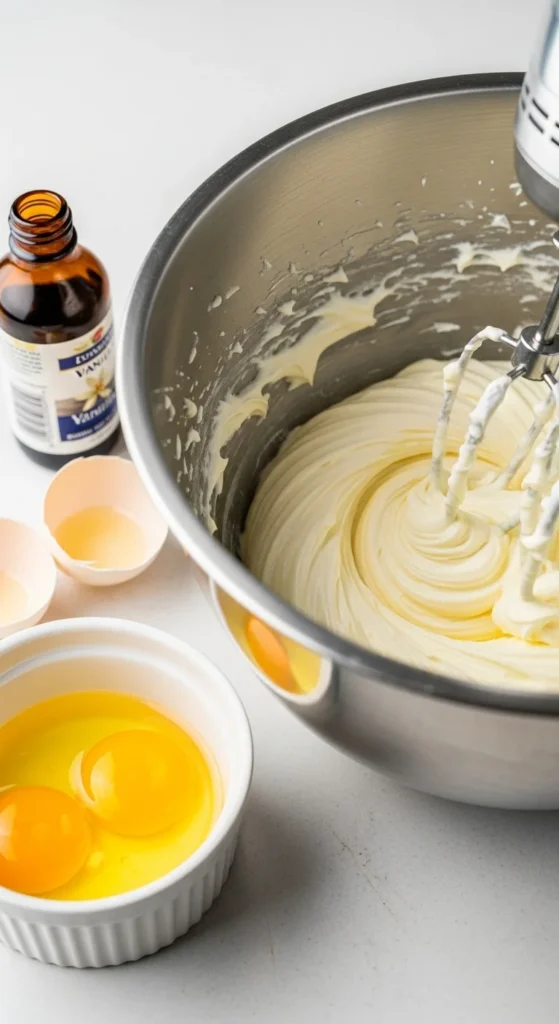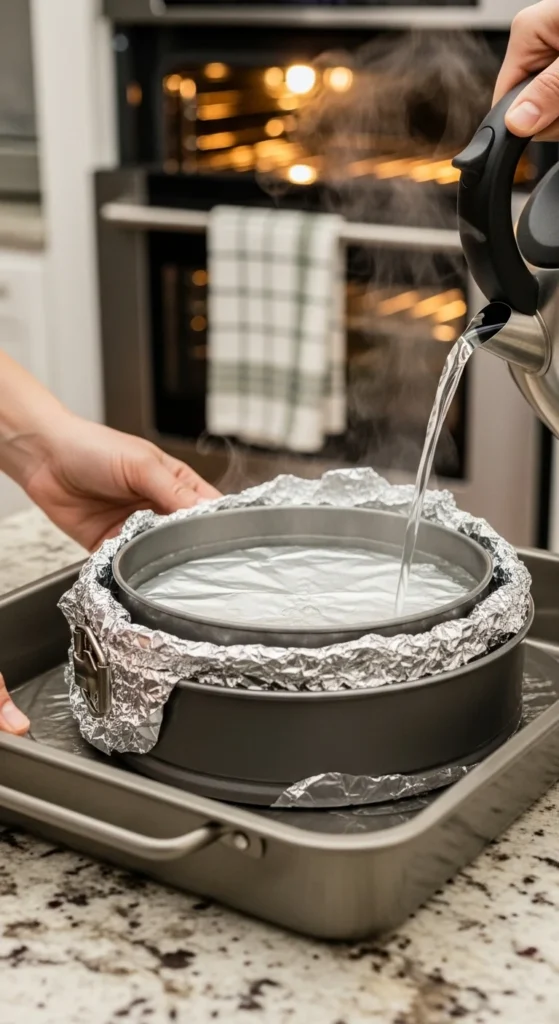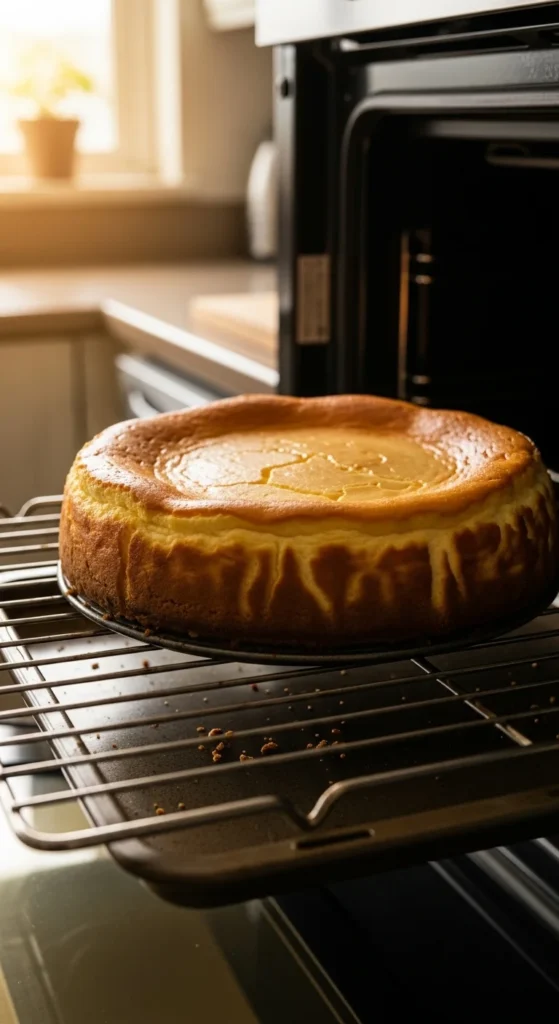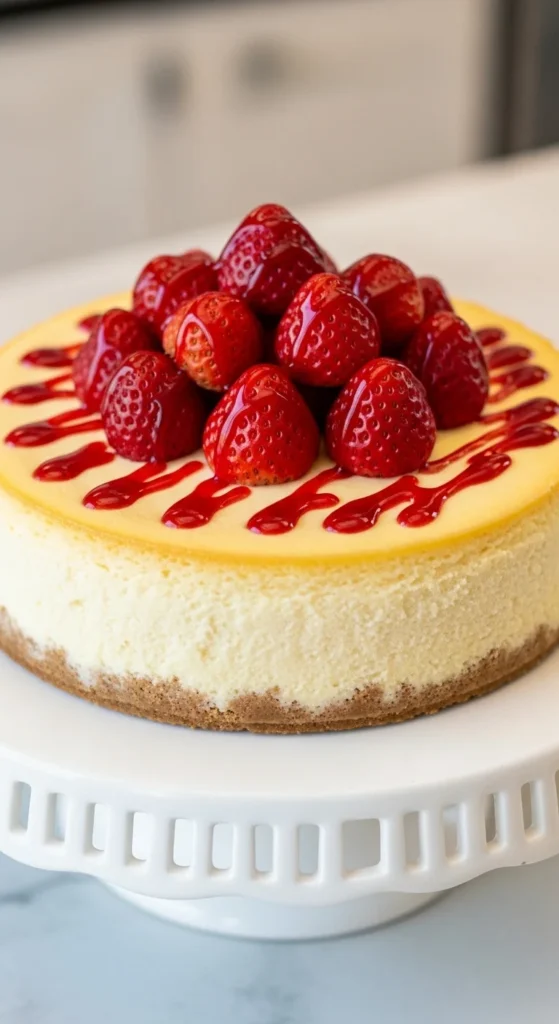
Few desserts are as elegant—or as intimidating—as a cheesecake. It’s rich, creamy, and perfectly indulgent, but one small misstep and you’re staring at a crack right down the middle. Don’t worry—it happens to even the best bakers. The good news? You can absolutely bake a smooth, picture-perfect cheesecake that doesn’t crack, dry out, or sink in the center.
All it takes is a little know-how, some patience, and a few pro tricks.
Step 1: Start With Room-Temperature Ingredients
Cold ingredients are the number one culprit behind lumpy batter—and lumps can lead to uneven baking and cracking.
Make sure to bring to room temperature:
- Cream cheese (3–4 blocks, softened for at least an hour)
- Eggs
- Sour cream or heavy cream
Room-temperature ingredients blend smoothly and trap less air, which means your cheesecake will be ultra-silky instead of puffy or cracked.
Pro tip: If you’re in a rush, unwrap your cream cheese and microwave it in 10-second bursts until just soft—don’t melt it!

Step 2: Mix Gently, Not Aggressively
Overmixing is another classic cheesecake mistake. The more air you beat into your batter, the higher it will rise—and the more likely it will collapse and crack as it cools.
Here’s what to do:
- Beat the cream cheese and sugar first until smooth.
- Add eggs one at a time, mixing on low speed until just combined.
- Stir in vanilla and cream gently with a spatula.
You want your batter silky and uniform, but not frothy. Less air = fewer cracks.
Step 3: Use a Water Bath (Yes, It’s Worth It!)
The water bath, or bain-marie, might sound fancy, but it’s a baker’s best friend for crack-free cheesecake. It keeps the oven environment humid and ensures your cheesecake bakes evenly without drying out.
How to make a simple water bath:
- Wrap your springform pan tightly in two layers of foil (to prevent leaks).
- Place it inside a larger roasting pan.
- Pour hot water into the outer pan until it reaches halfway up the sides.
- Bake as usual!
If the thought of a leaky water bath stresses you out, place a pan of hot water on a lower oven rack instead—it still creates steam for that gentle heat.

Step 4: Bake Low and Slow
Cheesecake doesn’t like sudden temperature changes. High heat can cause it to puff up too quickly, then crack as it cools.
Set your oven to 325°F (163°C) and bake for about 60–75 minutes, depending on your recipe and oven.
You’ll know it’s done when:
- The edges are set but the center jiggles slightly when gently shaken.
- It looks matte, not glossy on top.
Resist the urge to open the oven door too often—it can cause temperature drops and lead to surface cracks.

Step 5: Cool It Gradually
The number one rule of crack-free cheesecake: don’t shock it with a sudden temperature change.
After baking, turn off the oven and let the cheesecake sit inside with the door slightly open for an hour. Then move it to a cooling rack to come to room temperature before refrigerating.
Rapid cooling can cause the top to contract and crack. Slow and steady wins the race here.
Once cooled, cover the cheesecake loosely with plastic wrap and refrigerate for at least 4 hours (or overnight) to set fully before slicing.

Step 6: Hide (or Fix) a Crack Like a Pro
Even if you do everything right, a small crack might still appear—and that’s okay! Cheesecake is forgiving.
Here’s how to fix or hide it:
- Garnish: Cover with fruit compote, whipped cream, or chocolate ganache.
- Mend it: Use a warm offset spatula to gently smooth over the crack.
- Pretend it’s rustic: Because let’s be honest—no one’s complaining when there’s cheesecake on the table.
Bonus Tips for Perfect Texture
- Don’t overbake. A slightly wobbly center will firm up as it cools.
- Line your pan. A parchment circle on the bottom helps prevent sticking.
- Add cornstarch. A tablespoon in the batter can help stabilize the texture.
- Avoid drafts. Don’t place your cooling cheesecake near an open window or fan.

The Sweet Takeaway
A crack-free cheesecake isn’t about luck—it’s about patience and precision. From using room-temperature ingredients to baking in a gentle water bath, every step helps create that creamy, flawless finish.
So slow down, trust the process, and don’t forget to chill before slicing—the reward is a smooth, decadent dessert worthy of any celebration.



Leave a Reply